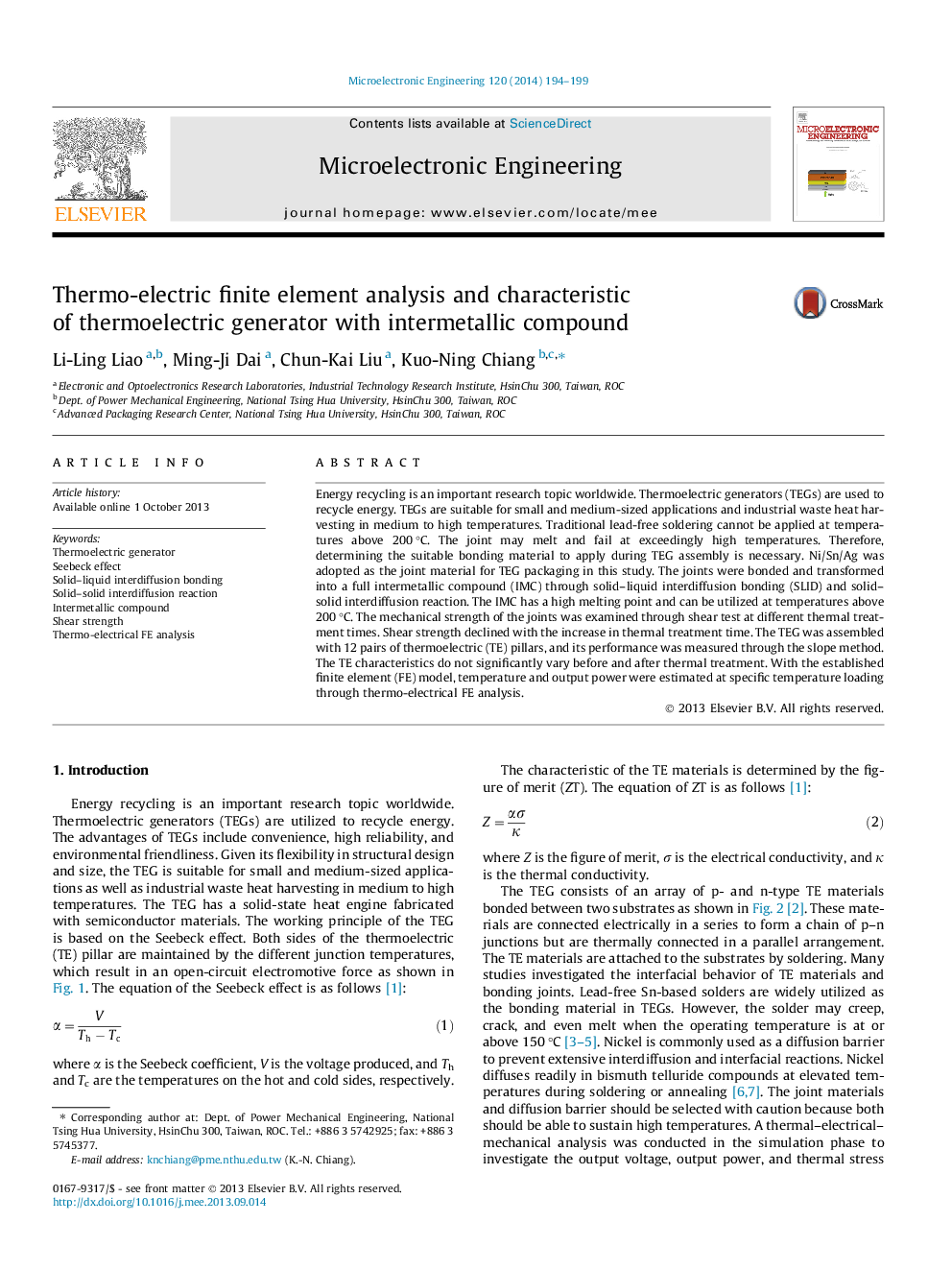| کد مقاله | کد نشریه | سال انتشار | مقاله انگلیسی | نسخه تمام متن |
|---|---|---|---|---|
| 541331 | 1450361 | 2014 | 6 صفحه PDF | دانلود رایگان |
• Tin reacted completely to transformed into full IMCs-Ni3Sn4 and Ag3Sn.
• Increasing the thermal treatment time and resulted in IMC thickness increased.
• Increasing the thermal treatment time and resulted in IMC shear strength reduced.
• The TE characteristics of the TEG vary significantly after the thermal treatment.
• Temperature and output power were estimated at a temperature loading by the numerical analysis.
Energy recycling is an important research topic worldwide. Thermoelectric generators (TEGs) are used to recycle energy. TEGs are suitable for small and medium-sized applications and industrial waste heat harvesting in medium to high temperatures. Traditional lead-free soldering cannot be applied at temperatures above 200 °C. The joint may melt and fail at exceedingly high temperatures. Therefore, determining the suitable bonding material to apply during TEG assembly is necessary. Ni/Sn/Ag was adopted as the joint material for TEG packaging in this study. The joints were bonded and transformed into a full intermetallic compound (IMC) through solid–liquid interdiffusion bonding (SLID) and solid–solid interdiffusion reaction. The IMC has a high melting point and can be utilized at temperatures above 200 °C. The mechanical strength of the joints was examined through shear test at different thermal treatment times. Shear strength declined with the increase in thermal treatment time. The TEG was assembled with 12 pairs of thermoelectric (TE) pillars, and its performance was measured through the slope method. The TE characteristics do not significantly vary before and after thermal treatment. With the established finite element (FE) model, temperature and output power were estimated at specific temperature loading through thermo-electrical FE analysis.
Figure optionsDownload as PowerPoint slide
Journal: Microelectronic Engineering - Volume 120, 25 May 2014, Pages 194–199
